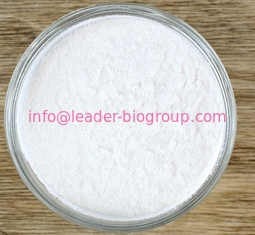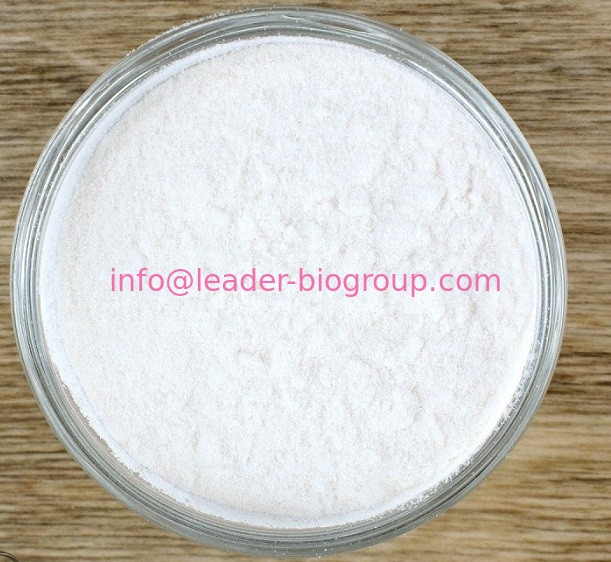| Parthenolide Basic information |
| Product Name: | Parthenolide |
| Synonyms: | Parthenolide, Tanacetum parthenium - CAS 20554-84-1 - Calbiochem;Factory Price Parthenolide 20554-84-1;Natural Plant Extracts Parthenolide 20554-84-1 High Purity HPLC>98%;Feverfew P.E Parthenlide;[1aR-(1aR*,4E,7aS*,10aS*,-10bR*)]-2,3-6,7,7a,8,10a,10b-Octahydro-1a,5-dimethyl-8-methyleneoxireno[9,10]cyclodeca[1,2-b]furan-9(1aH)-one;(1aR,4E,7aS,10aS,10bS)-2,3,6,7,7a,8,10a,10b-Octahydro-1a,5-dimethyl-8-methyleneoxireno[9,10]cyclodeca[1,2-b]furan-9(1aH)-one;4,5α-Epoxy-6β-hydroxygermacra-1(10),11(13)-dien-12-oic acid γ-lactone;4,5alpha-epoxy-6beta-hydroxy-germacra-1(10),11(13)-dien-12-oic acid gamma-lactone |
| CAS: | 20554-84-1 |
| MF: | C15H20O3 |
| MW: | 248.32 |
| EINECS: | 692-532-0 |
| Product Categories: | inhibitor;chemical reagent;pharmaceutical intermediate;phytochemical;reference standards from Chinese medicinal herbs (TCM).;standardized herbal extract;Sesqui-Terpenoids;Isoprenoid/terpenoidNeurotransmitters;Anti-Proliferative AgentsNutrition Research;Antitumor Agents;Biochemicals Found in Plants;Cancer Research;Others;Natural Product;Serotonergics;Prostanoid receptor and related |
| Mol File: | 20554-84-1.mol |
| Parthenolide Chemical Properties |
| Melting point | 115-116 °C(lit.) |
| alpha | D20 -81.4° (c = 1.04 in chloroform); D22 -71.4° (c = 0.220 in CH2Cl2) |
| Boiling point | 394.1±42.0 °C(Predicted) |
| density | 1.13±0.1 g/cm3(Predicted) |
| storage temp. | 2-8°C |
| form | White solid |
| Merck | 14,7048 |
| CAS DataBase Reference | 20554-84-1 |
| Safety Information |
| Hazard Codes | Xi,C,F |
| Risk Statements | 11-34 |
| Safety Statements | 22-24/25-45-36/37/39-26-16 |
| WGK Germany | 3 |
| RTECS | LY4220000 |
| HS Code | 29322090 |
| MSDS Information |
| Provider | Language |
|---|---|
| SigmaAldrich | English |
| Parthenolide Usage And Synthesis |
| Description | Parthenolide is an allergen in feverfew (Tanacetum parthenarium). |
| Chemical Properties | White solid |
| Uses | Antiinflammatory;MAP kinase inhibitor |
| Uses | Parthenolide is a sesquiterpene lactone from the plant feverfew (T. parthenium). It inhibits the growth of the promastigote form of L. amazonensis (IC50 = 3.6 μg/ml). Parthenolide also induces apoptosis in cancer cells, at least in part by inhibiting NF-κB- and STAT-mediated anti-apoptotic gene transcription. This compound has also been shown to block inflammation by inhibiting signaling through NF-κB. Inhibition of NF-κB by parthenolide can be achieved by direct binding of the pattern recognition receptor NOD2 by parthenolide. |
| Definition | ChEBI: A sesquiterpene lactone and active principle of Feverfew (Tanacetum parthenium). |
| Biological Activity | The active principle of feverfew (Chrysanthemum parthenium), widely used as a herbal remedy for arthritis and migraine and as a febrifuge. Parthenolide is antisecretory, anti-inflammatory, spasmolytic and inhibits the release of 5-HT from blood platelets. Also inhibits generation of leukotriene B 4 and thromboxane B 2 . |
| Contact allergens | Parthenolide is a sesquiterpene lactone found Asteraceae- Compositae such as feverfew (Tanacetum parthenium Schultz-Bip.) or congress grass (Parthenium hysterophorus L.). |
| Parthenolide Preparation Products And Raw materials |

